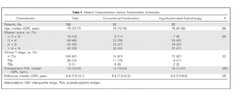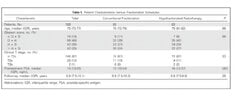- Joined
- Feb 17, 2017
- Messages
- 468
- Reaction score
- 735
Disclosure, I don’t treat GU, but had a lot of experience with 60 Gy / 20 fr in training. Nothing untoward really that was unexpected. I like the 20 fr SIB for the pts with nodes which has had some outcome data on it but less experience with that.
One thought experiment, and a lot of questions I have which are more theoretical in nature, are more about the radiobiology of hypofractionation. Emperically we have data to show it works well, especially in prostate cancer. However, one wonders if the tumor in its entirety has all the same ‘growth pattern’ or responds with the same a/b ratio, or if there are subpopulations within it. Some or the majority of cells may respond to a lower a/b ratio regimen with hypofrac, and others may respond better or have an intrinsic higher a/b ratio. I wonder about the patterns of failure of these treatments, and if we can learn anything from prostates with them.
Some of the more recent trials like ASCENDE and the planned ASCENDE where it’s BT vs SBRT boost, combine both a portion of conventionally fractionated treatment, as well as a large hypofrac component which may treat both subpopulations of tumors, if in fact that is a good model or way of thinking about things (or not). In addition to the dose escalation, this in my mind is also a possible explanation to the success of ASCENDE.
In other tumor sites, I wonder about the biology of local failures like this. Take small cell lung ca, maybe the resistant subpopulation has a low a/b and while we are great at killing the super rapid cells, obviously that’s not all it takes. The 60 Gy dose escalation work that’s being done there is interesting for sure.
Anyways, those are my musings from a simple, non GU rad onc. Would love to hear more from the armchair radiobiologists.
One thought experiment, and a lot of questions I have which are more theoretical in nature, are more about the radiobiology of hypofractionation. Emperically we have data to show it works well, especially in prostate cancer. However, one wonders if the tumor in its entirety has all the same ‘growth pattern’ or responds with the same a/b ratio, or if there are subpopulations within it. Some or the majority of cells may respond to a lower a/b ratio regimen with hypofrac, and others may respond better or have an intrinsic higher a/b ratio. I wonder about the patterns of failure of these treatments, and if we can learn anything from prostates with them.
Some of the more recent trials like ASCENDE and the planned ASCENDE where it’s BT vs SBRT boost, combine both a portion of conventionally fractionated treatment, as well as a large hypofrac component which may treat both subpopulations of tumors, if in fact that is a good model or way of thinking about things (or not). In addition to the dose escalation, this in my mind is also a possible explanation to the success of ASCENDE.
In other tumor sites, I wonder about the biology of local failures like this. Take small cell lung ca, maybe the resistant subpopulation has a low a/b and while we are great at killing the super rapid cells, obviously that’s not all it takes. The 60 Gy dose escalation work that’s being done there is interesting for sure.
Anyways, those are my musings from a simple, non GU rad onc. Would love to hear more from the armchair radiobiologists.



